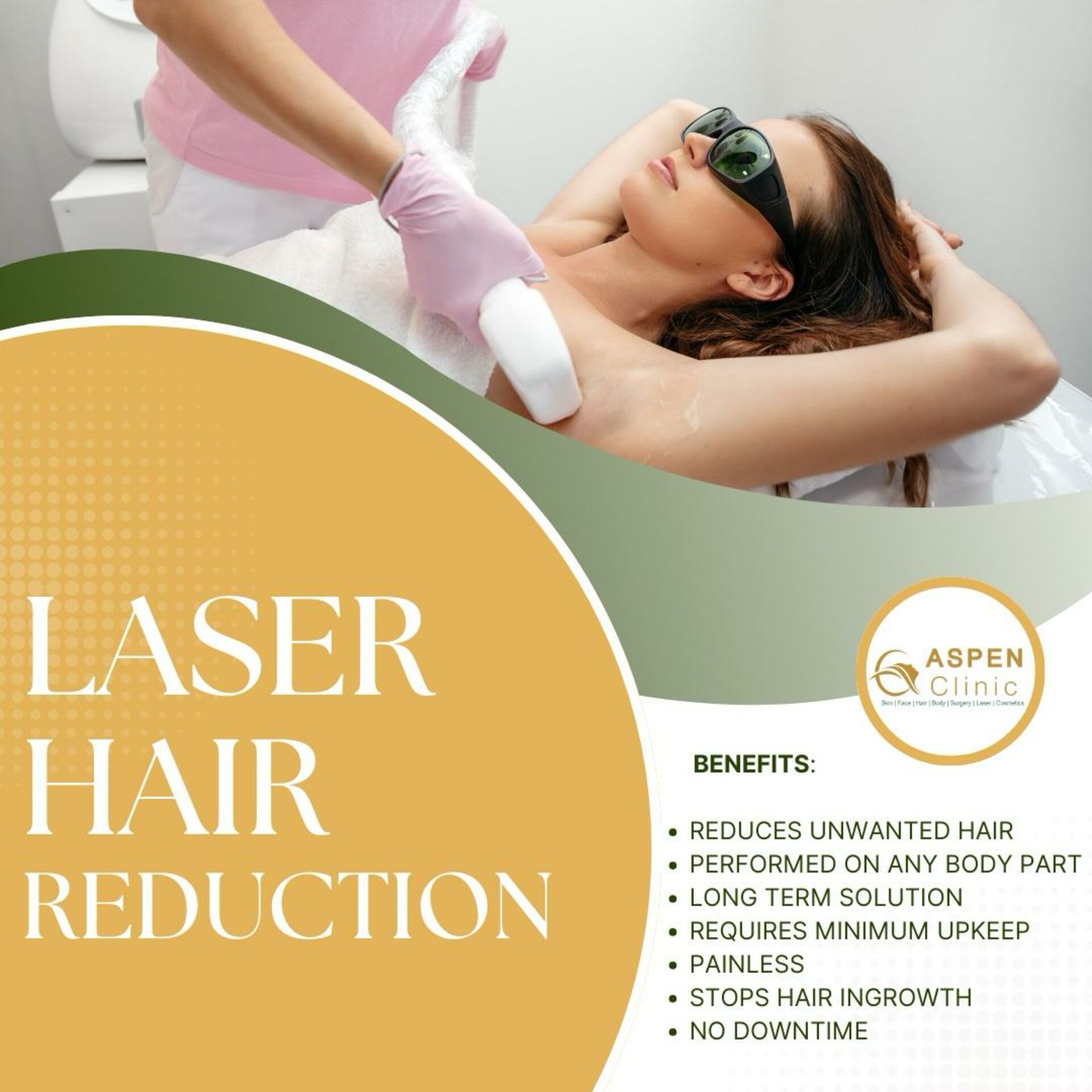Laser Hair reduction - Dr.Hina Khan
Laser Hair Reduction:
Diode laser hair reduction is a cosmetic procedure that uses a specific type of laser, known as a diode laser, to target and reduce unwanted body or facial hair. The diode laser emits a concentrated beam of light that is selectively absorbed by the pigment (melanin) in the hair follicles. This absorption of light energy converts to heat, which damages the hair follicles, inhibiting or delaying future hair growth.
How does diode laser hair reduction work?
1. Melanin Absorption: The melanin present in the hair follicles absorbs the laser light. Melanin is the pigment responsible for hair color.
2. Heat Generation: As the melanin absorbs the laser energy, it transforms into heat. This heat damages the hair follicles, particularly the cells responsible for hair growth.
3. Follicle Disruption: The heat generated by the diode laser disrupts the normal functioning of the hair follicles. This can lead to a delay in hair growth or, in some cases, permanent hair reduction.
4. Selective Targeting: One of the advantages of diode lasers is their ability to selectively target dark, coarse hair while minimizing damage to the surrounding skin. This makes diode lasers suitable for individuals with lighter skin tones and darker hair.
How many sessions are required for laser hair reduction? Multiple Sessions: Achieving optimal results typically requires multiple treatment sessions. Hair grows in different phases (anagen, catagen, and telogen), and the laser is most effective during the active growth phase (anagen). Since not all hair follicles are in the same phase at the same time, multiple sessions spaced over several weeks are necessary to target hair in various growth stages.
Is laser hair reduction treatment painful? Minimal Discomfort: Diode laser hair reduction is generally well-tolerated, and many systems incorporate cooling mechanisms to minimize discomfort during the procedure.
What is the aftercare post-laser hair reduction? Post-care after laser hair reduction is crucial to ensure optimal results and minimize potential
side effects. Here are some general guidelines for post-care after laser hair reduction:
1. Avoid Sun Exposure:
∙Stay out of direct sunlight for a few days after the treatment.
∙Use sunscreen with a high SPF on the treated area if sun exposure is unavoidable.
2. Gentle Cleansing:
∙Cleanse the treated area gently with a mild, fragrance-free cleanser.
∙Avoid hot water and harsh soaps for the first 24-48 hours.
3. Avoid Scrubbing or Exfoliating:
∙Refrain from using abrasive scrubs or exfoliants on the treated area for a few
days.
4. Avoid Heat:
∙Avoid hot baths, saunas, and hot tubs for at least 48 hours after the treatment.
5. Avoid Irritating Products:
∙Avoid using products that may irritate the skin, such as perfumes, fragrances, and alcohol-based products.
6. Moisturize:
∙Keep the treated area well-moisturized with a gentle, hypoallergenic moisturizer.
∙Aloe vera gel can be soothing if there is any redness or irritation.
7. Avoid Tight Clothing:
∙Wear loose-fitting clothing to avoid friction and irritation on the treated area.
8. Skip Intense Physical Activity:
∙Avoid intense physical activities, such as heavy workouts, for the first 24-48 hours.
9. Do Not Pluck or Wax:
∙Do not pluck, wax, or use any other hair removal methods that involve pulling out the hair from the follicle. Shaving is usually allowed.
10. Use Cool Compresses:
∙If there is any discomfort or redness, you can apply cool compresses to soothe the area.
11. Attend Follow-Up Appointments:
∙Attend any scheduled follow-up appointments to assess the progress and address any concerns.
∙Our clinic takes a personalized approach, tailoring laser hair reduction treatment plans to individual needs.
1. Precision and Effectiveness:
∙Laser Hair Reduction at ASPEN Clinic is a state-of-the-art solution designed to precisely target and eliminate unwanted hair from the face and body.
∙The advanced laser technology used ensures effectiveness in hair reduction, providing patients with long-lasting results.
2. Tailored Treatment Plans:
.Each patient’s hair pattern and concerns are unique. Our clinic takes a personalized approach, tailoring laser hair reduction treatment plans to individual needs.
∙The customization ensures that patients experience Targeted and efficient results based on their specific hair growth patterns.
3. Aesthetic Enhancement:
∙By addressing facial and body hair concerns, the Laser Hair Reduction component contributes to the overall enhancement.
∙Patients can achieve a smoother, more refined appearance, allowing other facial features to stand out and contribute to a more polished look.
4. Comfort and Convenience:
∙The laser hair reduction procedures at ASPEN Clinic prioritize patient comfort. The process is designed to be relatively pain-free, with minimal discomfort during and after the sessions.
∙The convenience of reduced facial hair growth eliminates the need for frequent maintenance, providing patients with a hassle-free solution.
5. Confidence Boost:
∙Achieving a smoother and hair-free appearance can significantly boost a patient’s confidence.
∙Patients often report feeling more comfortable and self-assured after Laser reduction, contributing to an overall positive impact on their well-being. In summary, Laser Hair Reduction is a vital component of ASPEN Clinic’s comprehensive aesthetics approach. By addressing unwanted hair, the clinic aims to provide patients with a holistic and individualized experience, aligning with their aesthetic goals and promoting a
confident and refined appearance.
** It’s important to note that diode laser hair reduction provides long-term hair reduction but
may not guarantee permanent hair removal. Maintenance sessions may be required over time
to address any regrowth. Additionally, the effectiveness of the treatment can vary based on
factors such as hair color, skin type, and individual response to the procedure.

Read More-
Book Your Appointment